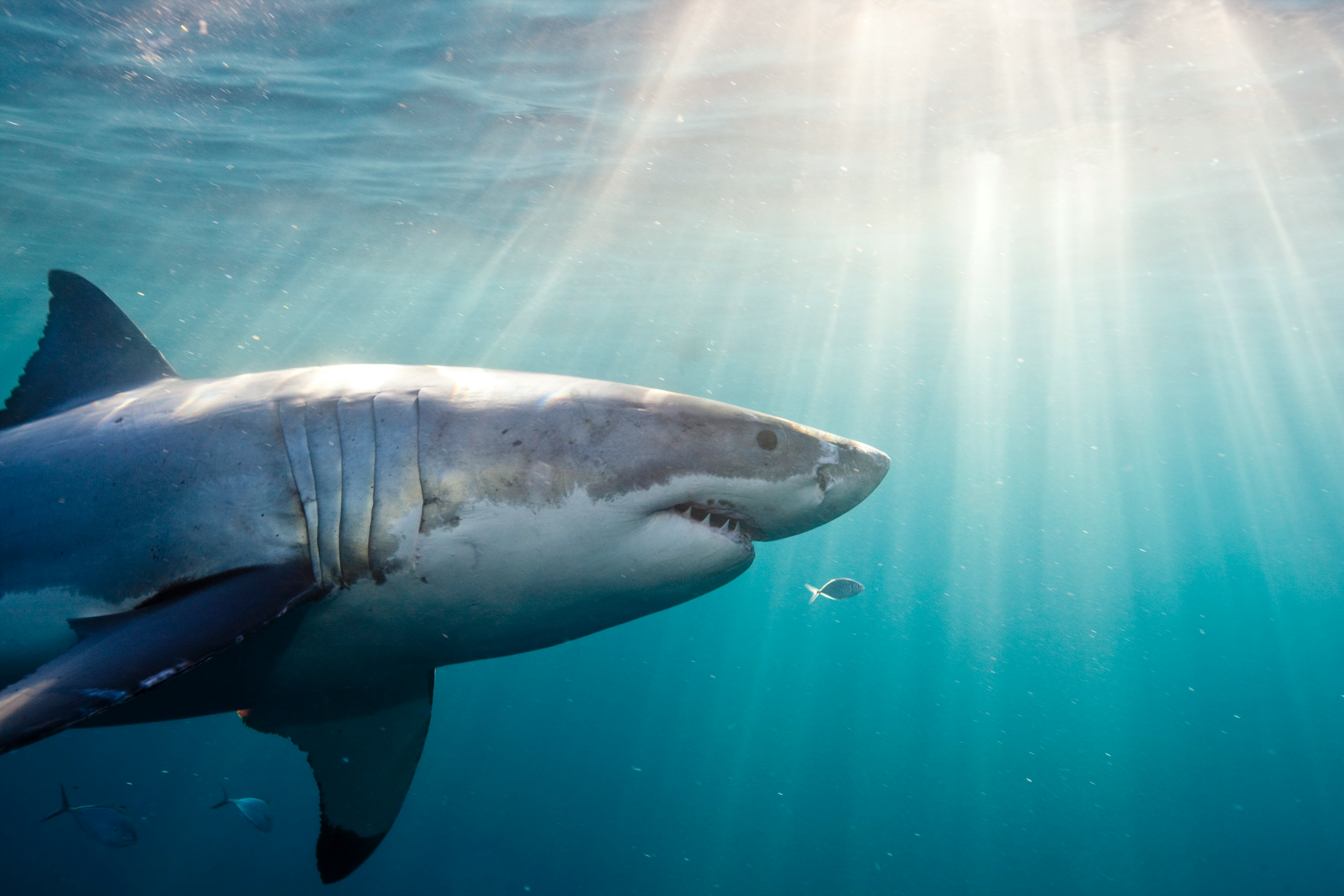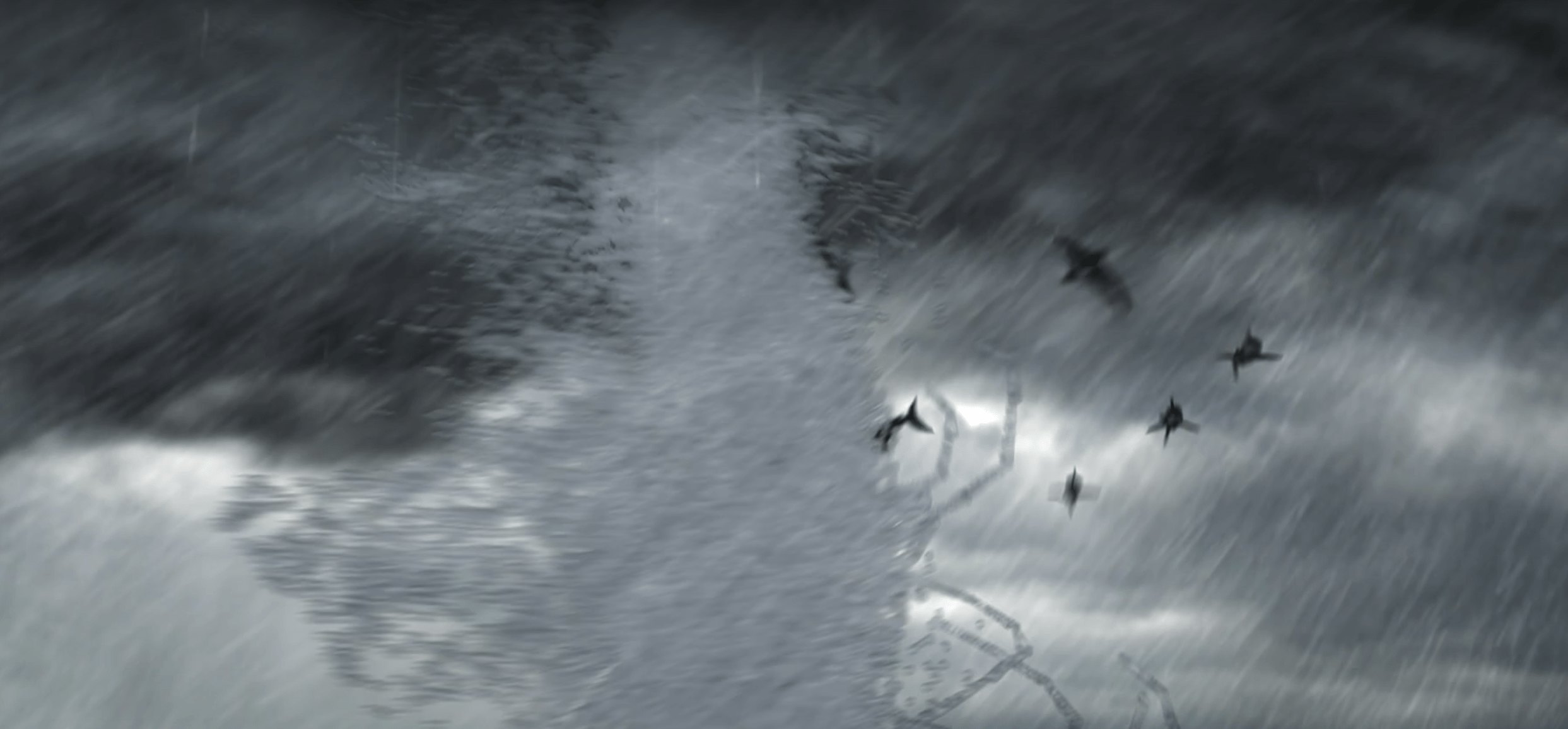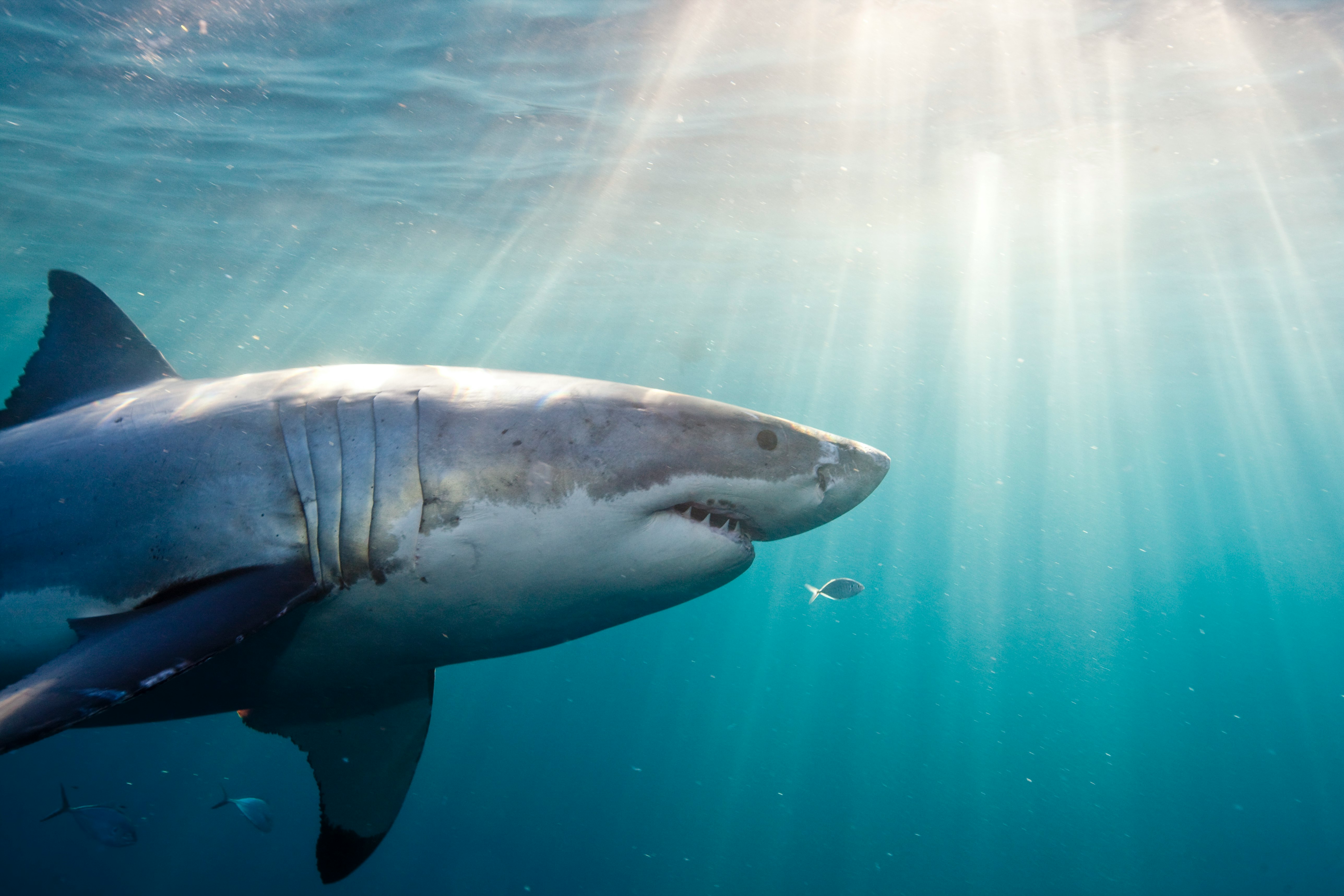
Every few years, a new shark movie comes out that tries to become the next Jaws. But when it comes to sheer shark mayhem, nothing can top 2013’s Sharknado, which launched an entire franchise of man-eating absurdity.
“The sharks are falling from the freaking sky!” someone cries out after a surprise hurricane in Los Angeles sucks a bunch of sharks into the sky.
As you might have predicted, some of the movie’s more outlandish shark gambits are wildly unrealistic.
“Sharknado is absurdist. Is anyone really watching Sharknado and thinking, Gee, maybe that could happen?” Joshua Wurman, president of the Center for Severe Weather Research and tornado expert, tells Inverse.
But it’s worth re-visiting this absurdist blockbuster for another reason: the real-life occurrence of human-shark encounters, which may increase in the near future due to human influence.
But should you be scared of sharknados? Or even plain old sharks? Stephen Kajiura, a shark researcher and biological sciences professor at Florida Atlantic University, tells Inverse that our fears may be unfounded.
“The path forward is not to be afraid but to be educated,” Kajiura says.
Here’s how movies like Sharknado and Jaws contribute to Hollywood’s long and problematic legacy of the “sharksploitation” — and the truth about an animal on the brink of extinction.
Reel Science is an Inverse series that reveals the real (and fake) science behind your favorite movies and TV.
Could a sharknado actually happen?

There are actually two questions here. The first is actually more plausible than you might think. Can hurricanes form tornadoes? Yes.
“Hurricanes often contain ‘supercell’ thunderstorms in their outer bands. Tornadoes can form in these supercells similarly to how they form in supercell thunderstorms in the High Plains,” Wurman says.
“Tornadoes that form over the ocean are classified as waterspouts. If a waterspout moves onshore, then it becomes a tornado,” Brian Tang, associate professor in atmospheric and environmental sciences at the University at Albany, tells Inverse.
The second question is a bit more ridiculous. Can such hurricane-spawned tornados send sharks flying into the sky and onto land to attack humans?
“Airborne sharks? Nope. Sharknado is very unrealistic,” Wurman says.
While Wurman says tornadoes can carry heavy objects like cars or houses, they cannot bring them long distances. Wurman and Tang mention anecdotal reports of small fish and frogs falling during thunderstorms — possibly from being carried up by waterspouts and being brought to land. But sharks are probably too heavy to be carried in a similar fashion.
“A tornado that forms in a hurricane would not bring a large creature — like a shark — from sea to land, so we’re not going to be seeing any sharknadoes in reality,” Tang says.
“Just no flying sharks.”
“I haven't seen the movie, but I would think that the biggest risk from airborne sharks is not from biting, but from just hitting someone,” Wurman adds.
Okay, so sharknadoes are probably out, but couldn’t a regular hurricane — sans tornadoes — fling sharks to shore to attack humans? It’s not out of the question, but it’s highly unlikely.
“I haven’t heard of a storm throwing a shark onto land,” says Yannis Papastamatiou, an associate professor at Florida International University’s Predator Ecology and Conservation lab.
It’s not impossible for sharks to wash up on shore during a hurricane. It’s unlikely, however, since sharks have the innate ability to avoid tropical storms.
“Growing evidence shows sharks move to deeper water as the barometer falls during a hurricane, but sometimes they don’t all make it out in time and get washed ashore or onto flooding roads during storms,” Chris Lowe, professor of marine biology and director of the shark lab at California State University, Long Beach, tells Inverse.
Lowe adds, “Just no flying sharks.”
Are shark encounters on the rise due to climate change?

“Since Sharknado is so far over-the-top unrealistic, I think most people do not believe that can happen,” Lowe says.
Yet many people are terrified of real-life shark encounters while playing in the shallows of the beach. If the headlines are any indication, they seem to be on the rise — and not just in tropical climates like Florida but on Northeastern Shores where they don’t typically visit as often, including in New York. But is that really the case? Well, sort of.
“We can’t say there are more shark attacks. Shark bites are very rare, which makes them hard to analyze,” Papastamatiou says.
Gavin Naylor is the director of the Florida Program for Shark Research at the Florida Museum of Natural History, which also maintains the world’s only global database on shark attacks. Naylor says shark attacks are not on the rise this year according to the data and the number of bites is “fairly consistent globally.” Rather, these higher-than-normal shark sightings in the Northeast are due to local environmental conditions that bring them to shore where people are swimming.
Sharknado takes place off the coast of Los Angeles. Southern California is home to great white sharks — seen in the movie alongside other sharks like hammerheads — and while they share the same space as humans, they don’t typically attack them. So shark sightings do not necessarily lead to shark bites.
“The new data we have suggests that people and white sharks are encountering each other daily in [southern California] and they aren’t biting people,” Lowe says.
“Sharknado is very unrealistic”
However, Lowe adds that the same may not be true for the great white sharks seen near Cape Cod, Massachusetts, since those sharks come to the area to feed on seals and may pose a greater threat to humans.
Kajiura says people in the northeastern United States may be seeing more sharks in unusual places has to do with two reasons. First, the recent success of shark conservation efforts in the U.S. has boosted the animal’s population numbers. Second, climate change is warming up the southern waters they normally frequent, causing them to migrate north in search of cooler water.
“You're getting sharks that used to summer no farther than North Carolina,” Kajiura says. “Now, they’re summering off Long Island, which is a high human density area.”
Papastamatiou says conservation measures may have boosted shark numbers, but that does not mean there are “hordes of sharks swimming around” as headlines — or shark movies — would suggest. He adds that the risk of being bitten by a shark is still “extremely low” — no matter how many humans get ripped to shreds in Sharknado.
Are sharks dangerous to humans?

The “shark attack” movie genre has proliferated in Hollywood since Jaws, exacerbating the public’s fears that a fun day in the sun at the beach will turn into a nightmare.
“The ocean isn’t a swimming pool and the chance of getting bitten isn’t zero,” Papastamatiou says.
But overall, experts suggest that humans don’t need to fear sharks — far from it. Kajiura says simple practices can significantly reduce your chances of a shark encounter. These precautions include not wearing shiny jewelry that may attract sharks, swimming in close range of a lifeguard station, not swimming through a school of fish, and avoiding the water at dusk or dawn when sharks are most likely to feed. Shark education programs in places like Long Island, where people may not be accustomed to the sea creatures, will also be necessary to keep people safe going forward.
Sharksploitation movies are problematic because they obscure the truth, which is that humans pose a far greater threat to sharks than they ever have to us. Sharks are “on the brink of extinction,” says Kajiura, and while population numbers may be on the rise in wealthier nations with successful conservation programs, that’s far from the case everywhere.
While climate change may benefit certain species like great white sharks, who are able to expand their range, it’s less clear how they’ll fare fifty years from now as ocean conditions continue to change.
“Other species, particularly tropical and polar species, may suffer the most as they may be incapable of tolerating dramatic changes,” Lowe says.
In a 2021 study, researchers simulated the loss of tiger sharks and found that, in their absence, dugongs — herbivores closely related to manatees — would grow unchecked and overconsume the seagrass. Since seagrass stores carbon and prevents its release into the atmosphere — a key cause of global warming — the loss of sharks could actually accelerate climate change.
Hollywood movies like Sharknado, which depict sharks as scary man-eaters, aren’t helping conservation efforts, even if they put the animals on people’s radars.
“There's no question that you're raising people's attention about sharks,” Kajiura says. “I'm just not convinced that that's the best way to do it.”
Sharknado is streaming now on Amazon Prime.







